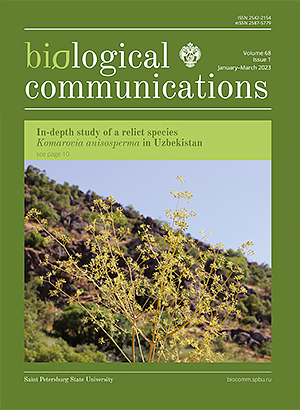The prospects for Symbiogenetics: emergence of superorganismal genomes and reconstruction of cellular evolution (mini-review)
DOI:
https://doi.org/10.21638/spbu03.2023.105Abstract
The superspecies systems of heredity that arise via coevolution of nonrelated organisms are represented as the subjects of Symbiogenetics, a new research field addressing integration of the heterologous genomes. Evolutionary mechanisms responsible for this integration include: a) interspecies altruism based on the symbionts' refusal from autonomous existence; b) inheritance of symbionts by hosts as of acquired genetic determinants (pangenesis). Under impacts of these factors, endosymbionts may be transformed into the cellular organelles that have lost biological and genetic individuality and sometimes lack their own genomes. The genomically truncated organelles that have retained the abilities for reproduction and metabolism are considered as the models to reconstruct the early stages of cell evolution, including the emergence of its genome.
Keywords:
Symbiogenetics, organellogenesis, hologenomes and symbiogenomes, pangenesis, biological altruism, open genetic systems, biological and genetic individuality, natural selection
Downloads
References
Downloads
Published
How to Cite
License
Articles of Biological Communications are open access distributed under the terms of the License Agreement with Saint Petersburg State University, which permits to the authors unrestricted distribution and self-archiving free of charge.





